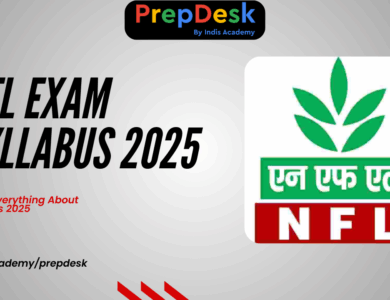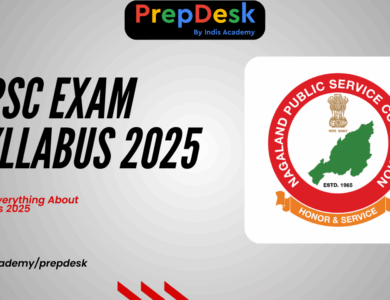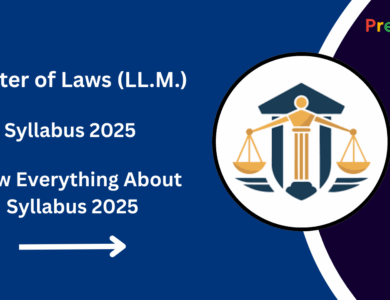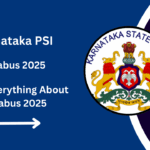BAMS Syllabus 2025 | Full Year-wise Subjects, NCISM PDF, Topics & Books
Explore the complete BAMS Syllabus 2025 with year-wise subject details, NCISM-approved curriculum, semester-wise topics, practical and theory marks, top Ayurvedic books, and official syllabus PDF. Get expert tips for preparation, specialization, and clinical training.
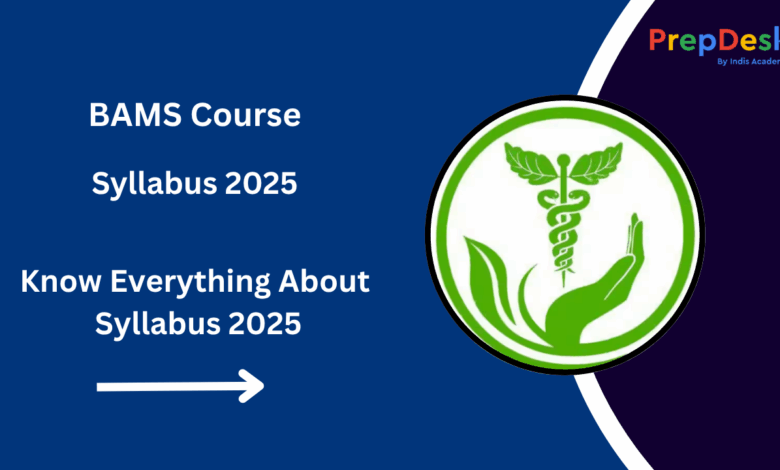
The Bachelor of Ayurvedic Medicine and Surgery (BAMS) is a premier undergraduate medical program in Ayurveda offered in India. Regulated by the National Commission for Indian System of Medicine (NCISM), the BAMS program aims to create competent Ayurvedic practitioners with in-depth knowledge of ancient Vedic texts, modern anatomy, pathology, and pharmacology.
The program spans 5.5 years, including 4.5 years of academic instruction (divided into four professional years, often referred to as semesters) and 1 year of rotatory internship.
BAMS Exam Overview
| Particulars | Details |
|---|---|
| Course Name | Bachelor of Ayurvedic Medicine and Surgery (BAMS) |
| Duration | 5.5 Years (4.5 Academic + 1 Internship) |
| Regulating Body | NCISM (National Commission for Indian System of Medicine) |
| Admission Criteria | Based on NEET-UG Score |
| Internship | 1 Year (Mandatory Rotatory Internship) |
| Curriculum Structure | 4 Professional Years (Semesters) |
| Eligibility | 10+2 with PCB (Physics, Chemistry, Biology) |
| Medium of Instruction | English & Sanskrit |
BAMS Syllabus: Semester/Professional Year-Wise Detailed Breakdown
First Professional Year
Focuses on foundational knowledge in Ayurveda philosophy, Sanskrit, Anatomy & Physiology.
| Subject | Description | Marks (Theory + Practical) |
|---|---|---|
| Padartha Vigyan evam Ayurveda ka Itihas | Introduction to Ayurvedic concepts, philosophy, metaphysics, six schools of Indian philosophy, and history of Ayurveda. | 100 (70+30) |
| Sanskrit | Ayurvedic terminologies, grammar, translations, and comprehension of Ayurvedic texts written in Sanskrit. | 100 (70+30) |
| Kriya Sharir (Physiology) | Study of body functions, Tridosha theory, Dhatus, Agni, Srotas, Ojas, and Ayurvedic physiology. | 100 (70+30) |
| Rachana Sharir (Anatomy) | Study of human anatomy including Marma (vital points), embryology, dissection. | 100 (70+30) |
First Year Key Learning Outcomes:
- Grasp basic Ayurvedic philosophy & terminologies.
- Understand human physiology from Ayurvedic and modern perspectives.
- Learn Sanskrit to read Ayurvedic texts fluently.
Second Professional Year
Introduces Ayurvedic pharmacology, toxicology, pathology, and medicine formulation techniques.
| Subject | Description | Marks (Theory + Practical) |
|---|---|---|
| Dravyaguna Vigyan | Study of medicinal plants, their properties, tastes (Rasa), potency (Virya), post-digestive effect (Vipaka), and Doshas. | 100 (70+30) |
| Rasashastra & Bhaishajya Kalpana | Ayurvedic pharmaceutics, metallic and mineral drugs (Bhasma), dosage forms like Asava, Arishta, Avaleha. | 100 (70+30) |
| Roga Nidan evam Vikriti Vigyan | Ayurvedic and modern diagnostic principles, pathology of diseases, Dosha-Dushya Sammurchana. | 100 (70+30) |
| Agadtantra, Vyavhar Ayurved evam Vidhi Vaidyak | Toxicology, forensic medicine, poisons, legal aspects in Ayurveda practice. | 100 (70+30) |
Second Year Key Learning Outcomes:
- Identify and classify herbs with therapeutic properties.
- Understand preparation and usage of Ayurvedic medicines.
- Study disease mechanisms and diagnosis.
- Learn legal/ethical aspects of Ayurveda.
Third Professional Year
Focuses on preventive healthcare, pediatrics, women’s health, and classical Ayurvedic texts.
| Subject | Description | Marks (Theory + Practical) |
|---|---|---|
| Swasthavritta evam Yoga | Public health, hygiene, Ayurvedic lifestyle, Dinacharya, Ritucharya, and Yoga. | 100 (70+30) |
| Charak Samhita (Purvardha) | Study of Sutrasthana & Nidanasthana from Charak Samhita. Ayurvedic treatment principles and disease causation. | 100 (70+30) |
| Kaumarbhritya (Balaroga) | Pediatric disorders, Ayurvedic neonatal and child care, immunization, nutrition. | 100 (70+30) |
| Prasuti Tantra evam Stri Roga | Women’s health, gynecological diseases, prenatal & postnatal care, Ayurveda obstetrics. | 100 (70+30) |
Third Year Key Learning Outcomes:
- Learn preventive healthcare through diet, yoga, and hygiene.
- Gain insight into gynecology and pediatrics in Ayurveda.
- Deep dive into Ayurvedic diagnostics and treatment plans.
Fourth Professional Year
This is the most advanced and clinically intensive year, covering General Medicine, Surgery, ENT, Panchakarma, and Research.
| Subject | Description | Marks (Theory + Practical) |
|---|---|---|
| Kayachikitsa | Internal medicine, Rasayana & Vajikarana therapies, Panchakarma, chronic disorders. | 100 (70+30) |
| Panchakarma | Five detox procedures: Vaman, Virechan, Basti, Nasya, Raktamokshan, with indications/contraindications. | 100 (70+30) |
| Shalya Tantra | Minor surgery, wound care, Kshara Sutra therapy for fistula, piles, fractures. | 100 (70+30) |
| Shalakya Tantra | Diagnosis/treatment of eye, ear, nose, throat, and dental issues in Ayurveda. | 100 (70+30) |
| Research Methodology & Medical Statistics | Biostatistics, clinical trial design, data analysis, paper writing. | 100 (70+30) |
Fourth Year Key Learning Outcomes:
- Confidently perform Panchakarma therapies.
- Manage chronic and lifestyle disorders holistically.
- Apply minor surgical methods.
- Learn evidence-based Ayurveda practice and research techniques.
BAMS Syllabus PDF Download
Download the official BAMS syllabus PDF from NCISM below:
Click Here to Download BAMS Syllabus PDF 2025
Best Books for BAMS Preparation
| Subject | Recommended Book | Author |
|---|---|---|
| Padartha Vigyan | Ayurveda Ka Darshan | Dr. Satyavrat Shastri |
| Rachana Sharir | Rachana Sharir | Dr. C.K. Kunte |
| Kriya Sharir | Kriya Sharir | Dr. D.K. Jha |
| Dravyaguna | Dravyaguna Vigyan | Dr. P.V. Sharma |
| Rasashastra | Ayurvediya Rasashastra | Dr. H.S. Sharma |
| Charak Samhita | Charak Samhita | Yadavji Trikamji |
| Kayachikitsa | Kayachikitsa Part I–III | Dr. G.N. Pandey |
| Panchakarma | Panchakarma Vigyan | Dr. G. Prakash Rao |
| Research | Medical Statistics | B.K. Mahajan |
Specializations After BAMS
| Specialization | Field |
|---|---|
| Kayachikitsa | Internal Medicine |
| Panchakarma | Detoxification Therapies |
| Dravyaguna | Herbal Pharmacology |
| Shalya Tantra | Surgery |
| Shalakya Tantra | ENT & Eye Diseases |
| Kaumarbhritya | Pediatrics |
| Rasashastra | Ayurvedic Pharmaceutics |
| Prasuti & Stri Roga | Gynecology & Obstetrics |
Preparation Tips for BAMS Students
- Daily Revision – Revise Samhitas and shlokas regularly.
- Use Flashcards – Helpful for Sanskrit terms and herbs.
- Group Study – Complex concepts are better understood together.
- Practice Diagrams – For Anatomy, Srotas, Panchakarma flowcharts.
- Mock Tests – Attempt PYQs for better exam practice.
Conclusion
The BAMS syllabus blends ancient Ayurvedic knowledge with modern science, making it a unique and comprehensive medical program. From philosophy to surgery, students learn to treat diseases naturally, holistically, and ethically. With the global rise in Ayurvedic awareness, BAMS graduates are in demand across the health and wellness industry.
Choose BAMS if you aspire to be a doctor rooted in India’s medical heritage with modern-day impact.
